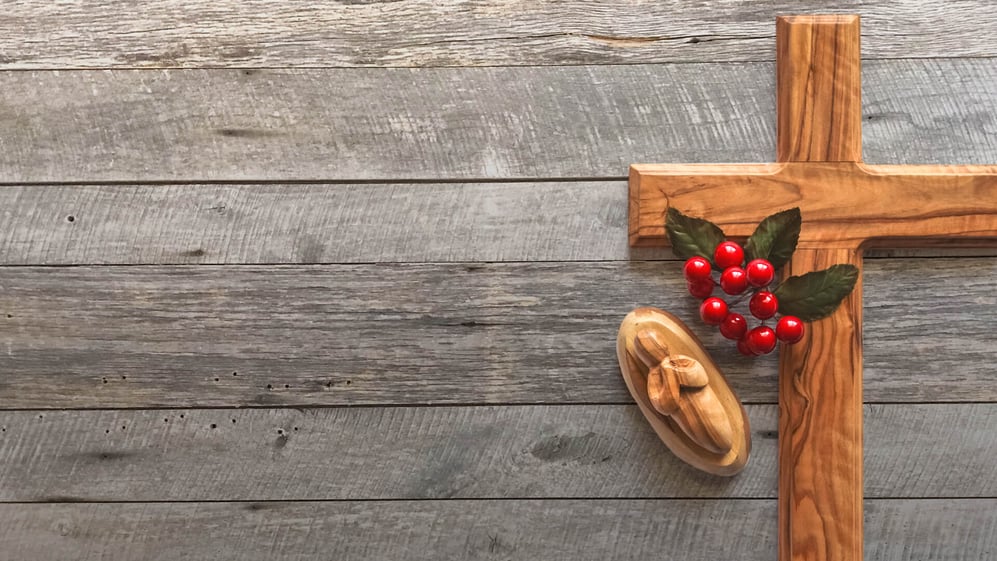Toward the end of December, there are several feast days that tend to get overlooked as we celebrate Advent and Christmas. Let’s take a few minutes to draw our attention to these commemorations of the faithful.
December 21, St. Thomas
Thomas’s feast day is the traditional date of his death in AD 72. Tradition holds that Thomas traveled to modern-day India, bringing the Gospel message with him. Some Christian traditions moved Thomas’s feast day to July 3 in order to not interfere with Advent. The Feast of St. Thomas is the only occasion where the Book of Judges is used by the lectionary (the story of Gideon).
Thomas is featured in the Easter season as one who misses out on the resurrected Jesus’ appearance to the other ten disciples on Easter evening. He is often connected with the phrase “Doubting Thomas,” but lest we overlook his true importance, let us remember he also confessed of the risen Christ, “My Lord and my God!” (John 20:28). This confessing Thomas can prepare us to confess as well, to confess that the Child born in Bethlehem is our Lord and our God.
December 26, St. Stephen
You may recall Stephen’s name from the Christmas Carol “Good King Wenceslas.” The opening lines go like this:
Good King Wenceslas looked out
On the Feast of Stephen
When the snow lay round about
Deep and crisp and even. [1]
That Feast of Stephen is the day after Christmas. Stephen was named a deacon by the twelve apostles in Acts 6. We are told he is “a man full of faith and of the Holy Spirit” (Acts 6:5). But Stephen was martyred for his faith in the very early years of the Church. We see a long sermon by Stephen as he was about to be stoned to death in Acts 7. Saul of Tarsus (who we more commonly call the apostle Paul) oversaw Stephen’s stoning.
One strong instance of Stephen’s faithfulness is that he echoed Jesus’ words from the cross. As Jesus was being crucified, He said, “Father, forgive them, for they know not what they do” (Luke 23:34). As Stephen was dying, he said, “Lord, do not hold this sin against them” (Acts 7:60). Stephen shows us what it looks like to live and die like Christ.
December 27, St. John
Tradition holds that the apostle John is the only one of the apostles not to be martyred for his faith. This is why the color for his feast day is white and not red, the color for martyrs’ feast days. White is the color for non-martyr feast days, signifying their non-bloody deaths.
John wrote five books of the New Testament. John’s feast day is the only saint’s day when three of the saint’s own writings are read for the readings (selections from Revelation, 1 John, and the Gospel of John).
The Epistle for the occasion (1 John 1:1–2:2) echoes the Gospel from John for Christmas Day (John 1:1–14). Here’s the first verse: “That which was from the beginning, which we have heard, which we have seen with our eyes, which we looked upon and have touched with our hands, concerning the word of life” (1 John 1:1).
As we celebrate Christmas, and ponder the baby Jesus with awe, these words from 1 John drive home the wonder of the incarnation. God becomes a human being that people saw and heard and touched in the person of Jesus.
December 28, The Holy Innocents
Just a few days after we celebrate the birth of Jesus, we remember the other children who were born in Bethlehem around the same time as Jesus, children who died because the tyrant Herod wanted to kill any child who might be the prophesied one who would threaten his rule.
In Matthew 2, after Jesus was born, Magi showed up in Jerusalem looking for the King of the Jews. Herod the king called for the chief priests and scribes who informed these visitors from the East that the Christ was to be born in Bethlehem, just a few miles away from Jerusalem. The Magi went and found Jesus, but after their visit, the Magi were warned in a dream not to return to Herod. Likewise, Joseph was warned in a dream to flee to Egypt with Mary and Jesus. King Herod was seeking to kill Jesus, the newly born King of the Jews. The Holy Innocents we commemorate on this day are those children killed in Bethlehem by King Herod as he sought to kill Jesus.
Matthew 2:16–18 records this tragedy, and we are told it is a fulfillment of Scripture. Matthew quotes the prophet Jeremiah in verse 18: “A voice was heard in Ramah, weeping and loud lamentation, Rachel weeping for her children; she refused to be comforted, because they are no more.”
One of the things I find interesting is the connection to Rachel. Rachel died giving birth to Benjamin near Bethlehem. “So Rachel died, and she was buried on the way to Ephrath (that is, Bethlehem)” (Genesis 35:19). Jesus, who escaped the plots of King Herod, is not a descendant of Rachel. He is a descendant of Leah, of the tribe of Judah.
Not many Christmas carols speak to this event, though one Polish carol does. In Polish, it is called “W Żłobie Leży.” In English, we have titled it “Infant Holy, Infant Lowly,” number 393 in Lutheran Service Book. While the English translation only uses two stanzas, the Polish carol is eight stanzas. The seventh stanza is about these Holy Innocents and Rachel weeping in Ramah.
The Holy Innocents remind us that Christ’s entrance into the world, even as a baby, is opposed by sin, death, Satan, and the world. But God preserved Jesus so that sin would be forgiven, death would be destroyed, Satan overthrown, and the world overcome.
[1] Text by John Mason Neale, 1818–1866. Public Domain.
Scripture: ESV®.
Learn more about the lives of the saints with Pastor Weedon’s Celebrating the Saints!















